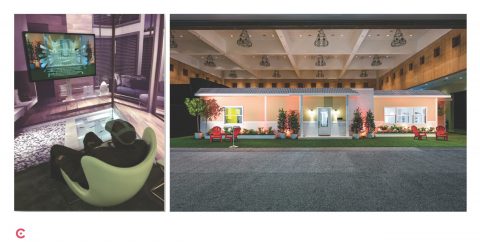For decades, medical advertising relied on a tried and true formula of journal ads, direct mail, and collateral materials to communicate information to healthcare professionals.
With the development of digital communications, the industry found a tool perfectly suited for its information-heavy needs. Digital communications allowed more information to be communicated, with access to user-selected materials, interactivity, enhanced graphics, and many of the features of one-on-one personal communications.
Early efforts in this realm were handled by existing creative groups, assisted by a growing cadre of young professionals versed in the growing capabilities of digital communications. As the digital area grew and became more central to communication programs, agencies spun off digital divisions to handle these specialized needs.
The Medical Advertising Hall of Fame has honored the exceptional creative work from this period with its Heritage Ad Awards. With the growth and continuing evolution of digital communications, the organization is expanding its scope to include this newest form of advertising, and is instituting a Digital Pioneer Award to honor early efforts in this arena.
2016, the 20th anniversary of the MAHF, marked the introduction of our Digital Pioneer Awards (DPA).
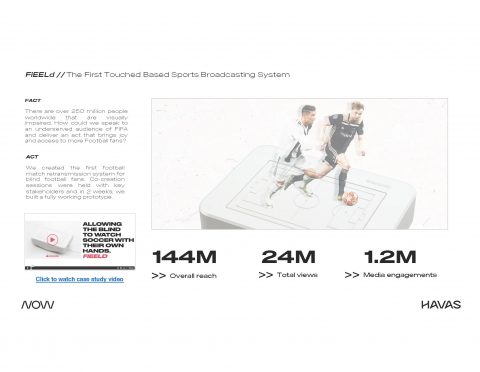
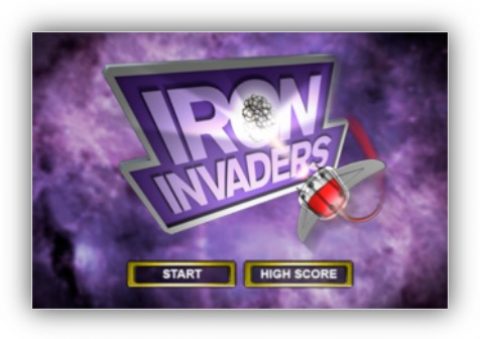
Name of company/client owning product/campaign:
Novartis
Year launched:
2013
Type of media:
App
Agency producing product/campaign:
DDB Health
Team members:
Jennie Fischette, Michael Schreiber, Chris Mears
Goals of product/campaign:
Empower patients through education and conversation starters to ensure early diagnosis of iron toxicity. The basis for this unprecedented success was a relationship marketing program called “Be Sickle Smart”.
Intercept and educate patients with a multichannel experience through advocacy outreach, a consumer spokesperson, gaming, and an online platform that delivered personalized messaging to each age group.
Create a personal and culturally relevant campaign that resonated with patients.
Description of product/campaign:
We leveraged co-created tools for advocacy to deliver directly to the community via social media and developed educational “gamification” tools to speak to our at-risk teenagers with iron overload in an engaging way and activate them to take action. View a clip of the game here.
What made this a special product/campaign:
While gamefication may seem old-hat today, it was breakthrough for pharma over a decade ago. Through this effort, a 28% increase occurred in the identification of appropriate patients for the treatment of iron overload.
Iron Invaders educational app was downloaded by 7k patients and played an average of 11 times by each user.
Please list any awards and honors the product/campaign received:
Iron Invaders was the first ever pharmaceutical app listed in Apple App Store’s New & Noteworthy section and won numerous digital awards.
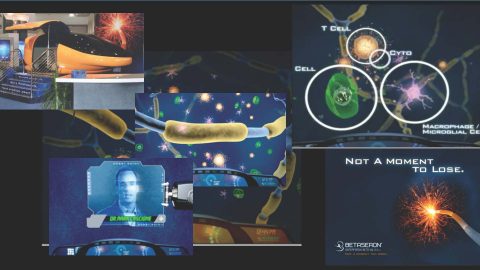
Name of product/campaign: Betaseron: The “POD” 3D 360 Degree Simulator
Name of company/client owning product/campaign: Bayer: Betaseron
Year launched: 2009
Type of media: Virtual Reality Experience
Agency producing product/campaign: Concentric Health Experience
Team members:
Ken Begasse, CEO
Michael Sanzen, CCO
Sayan Ray, AD
Aimee Eastwood, CW
Amanda Rivera, AE
Michael Rowe, Client
Goals of product/campaign: To educate neurologists about the need to treat early at the first clinical signs of Multiple Sclerosis.
To engage neurologists in a never experienced before way, to educate them on the new data for Betaseron as the only DMT with disease progression impact when used at the CIS.
To create a convention education experience that out-performed the competition and linked attendees into the Betaseron CRM platform.
They were asked to enter the BETA RESPONDER to embark on a mission to defeat MS.
Description of product/campaign: The First Responder gave viewers a first person journey through the CNS system in response to a first MS attack. With urgency, the responders experience our brand message…when MS attacks, “There’s not a moment to lose” and the use of Betaseron was “Not a Moment Too Soon”. Flying through the CNS, responders were educated on MS progression, Betaseron MOA and exposed to the growing data proving the Betaseron was a strong first choice for long-term MS management. The POD simulator experience was a mixed media, live experience. The 360 degree articulating POD fit 12 people and enveloped the riders in a immersive virtual 3D animated experience with surround sound. The First Responder Pod, educated and entertained attendees, with the early use of virtual reality. Much like today, message retention was elevated through engagement that pioneered 3D animated and live video.
What made this a special product/campaign: The early use of virtual reality combined with the physical experience transformed the Betaseron message beyond a print and data experience. In its first use at the AAN in Boston, the POD Simulator drew over 120 MD’s per hour, a 400% from previous year booth draws. Over 2,500 MD’s signed up for the CRM program at the AAN. The experience was so captivating, it was featured in a Boston Globe article on the event as innovative ways to educate physicians and the convention floor remained open an extra hour each day to accommodate the demand. The experienced amortized across many channels and events. The POD was transported across the nation to educate physicians at subsequent conventions, sales training events and health fairs at physician offices. The animation was used as education leave behinds for MD’s, loaded onto the reps tablet detail and used on the physician website. The The ROI was a miraculous 100:1.
Awards and honors the product/campaign received:
MM&M 2009 Gold Interactive
Bayer Innovator Award
RX Award
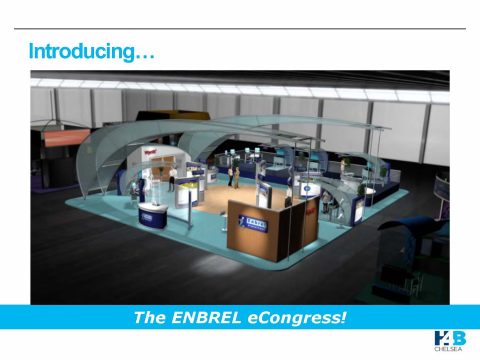
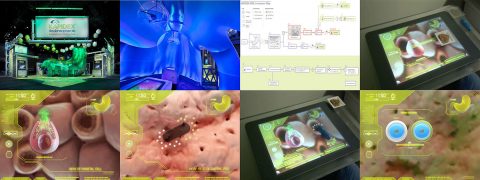
Name of product/campaign: Dexilant MOA
Name of company/client owning product/campaign: Takeda
Year launched: 2009
Type of media: MOA
Agency producing product/campaign: AbelsonTaylor
Team members:
Noah Lowenthal
Marissa Ori
Vanessa Ruiz
Kat Burzycki
Donald Hanson
Scott Hansen
Lee Parkel
Goals of product/campaign: Dexilant (formerly Kapidex) was a second-generation proton pump inhibitor, launching in a very crowded market along with Prevacid and Nexium (the legendary Purple Pill). Fortunately, Dexilant’s main differentiator was a clinically meaningful one—two releases of medicine in one pill. This was important, because those pesky proton pumps that produce all that painful acid in GERD are not all “on” at the same time. Some pumps turn on in the morning—those can be controlled with a morning PPI dose. But some pumps don’t turn on till later in the day, and by then, the medicine is beginning to leave the system, causing more pain for the patient. Enter Dexilant – one release of medicine in the morning, and one later in the day to truly shut down acid production all day.
It was a simple story to tell, and educating gastroenterologists about proton pumps turning on and off throughout the day and thereby “escaping” the effects of the PPI, was the focus of our prelaunch market conditioning program.
Dexilant launched at Digestive Disease Week 2009, and the brand went all out building a memorable booth that drove home the idea of two releases, and included a giant building-sized steel stomach. And inside that stomach, at the heart of the booth, was the MOA experience that worked to differentiate Dexilant from the billion-dollar brands already on the market.
Description of product/campaign: Because it was impossible to know whether a gastroenterologist walking into our booth had seen the market conditioning program, we created a “choose your own adventure”-style MOA experience. The moderator prompted the audience to set the level of education that each tour provided. This would allow for a quick reminder for some HCPs, and a more in-depth experience for others. The technology that drove it all was the newly-launched Microsoft Surface Table—a massive, coffee table-sized multitouch platform.
Conference attendees would enter the oversized stomach in shifts and gather around the table where a trained moderator would guide them through the MOA. No two experiences were the same as each crowd would socially decide which part of the stomach they would explore and to which level of detail. They could scroll through the hours in a day and watch proton pumps turn on and produce acid at different times, they could “dose” the drug by placing a physical model of a capsule on the table and “flick” the two types of granules to shut down the early pumps or the later-in-the-day pumps, or they could stimulate even more acid production with a physical plate of food (both physical models had RF tags on their underside that the screen could recognize and launch a particular action).
What made this a special product/campaign: Late 2008 (when production on this project began) was a pivotal year for this type of immersive technology. iPads had just come to market, touchscreens were just hitting the mainstream, and gestures were just being introduced to users—nevermind the novelty of triggering onscreen events with physical objects. Set inside the giant steel stomach in the booth at DDW, the Dexilant Surface MOA was a social learning application that provided a digitally and physically immersive experience. By harnessing the excitement of this new technology, our simple story generated interest beyond expectations—Takeda had to hire “bouncers” for the booth to help with crowd control.
Awards and honors the product/campaign received:
Clio – Silver
Click here to view video
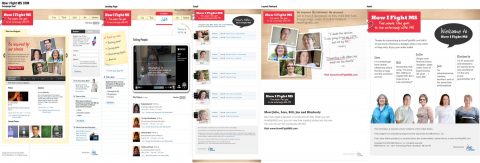

Name of product/campaign: FlexPen
Name of company/client owning product/campaign: Novo Nordisk
Year launched: 2008
Type of media: Website
Agency producing product/campaign: closerlook, inc.
Team members:
Jon Sawyer – Account Director
Andrea Walter – Account Manager
Ali Barrett – Art Director
Dave Reidy – Writing Director
Abby Covert – Information Architect
Pat Conlon – QA
Justin Muggleton – Senior Designer
Holly Grigalunas – Copy Writer
Todd Kneedy – Technical Architect
Goals of product/campaign: Novo Nordisk wanted to create greater awareness of its portable insulin-pen product, FlexPen®. The unique design offered flexibility, ease and independence for people with diabetes. closerlook was asked to help create an online photo contest that would appeal to both current and potential FlexPen users to emphasize the product’s benefits. A secondary goal was to drive increased traffic and membership to Changing Life with Diabetes, the company’s free, online community for people with diabetes.
The contest asked current FlexPen users to submit a photo of themselves and their FlexPens in an interesting location. closerlook used Novo Nordisk’s large patient database to reach out to a variety of potential contest participants.
Description of product/campaign: The challenge allowed for only FlexPen users to submit photos. closerlook recommended broadening the reach of the contest by incorporating several phases of participation. While only FlexPen users could submit their photos, closerlook recommended engaging the general public to vote for the winners. A main contest website would be the home base for the contest. A series of strategically planned e-mails and banner ads would drive traffic to the website.
Because anyone would be able to vote for the winning photos, we also recommended expanding the target audience beyond Novo Nordisk’s database by tapping into a database provided by a popular, diabetes-related website. Advertising the contest on additional websites would help further enhance participation and increase awareness.
What made this a special product/campaign: The campaign received more than four million brand impressions and the contest photos were repurposed in Novo Nordisk public-relations efforts.
Having strengthened the relationship between FlexPen users and the FlexPen brand, and increased general awareness of the ease and mobility of FlexPen, the contest campaign was a success.
Awards and honors the product/campaign received: Global Awards
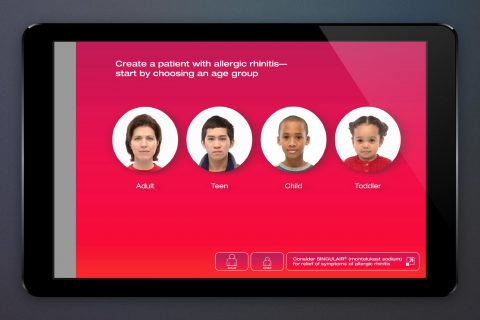
Name of product/campaign: Singulair AR: Build-a-Patient
Company/client owning product/campaign: Merck
Year launched: 2007
Agency producing product/campaign: JUICE Pharma Worldwide
Team members:
Joan Wildermuth
Debbie Valle
Phil Scherer
Karl Schempp
Laurie Frasier
Ben Surette
Michael Kaminski
Hector Lopez
Leslee Epperhart
Brian Purcell
Erika Maas
Goals of product/campaign: Singulair needed to engage and make its unique MOA relevant. For a “nuisance condition” like allergic rhinitis, getting an HCP’s attention was challenging, and making the product top-of-mind as an Rx choice for a wide range of patients was even more so. This detail helped to achieve those goals in a memorable way.
Description of product/campaign: Built for tablet PC, the interactive detail allowed HCPs to choose a patient type and define the clinical concerns that were most relevant to them. 32 unique patient portraits enabled the user to select any of 4 ethnicities, 4 age groups as well as gender. An array of scientific and clinical data was presented in animated modules designed to foster conversation.
What made this a special product/campaign: Before “personalization” was a buzzword, this detail facilitated conversations that were specific to an individual doctor’s patient cohort and clinical concerns. Selecting a patient created moments of delight, and the extensive use of animation throughout made the experience truly engaging. At the time, it was a groundbreaking tool.
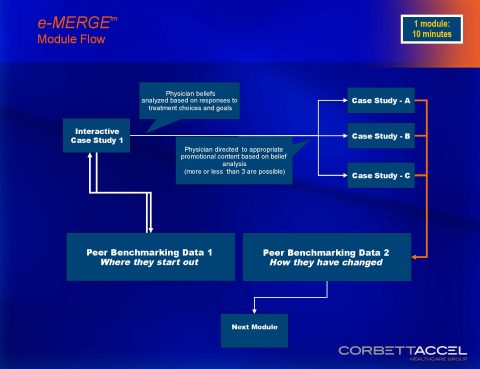
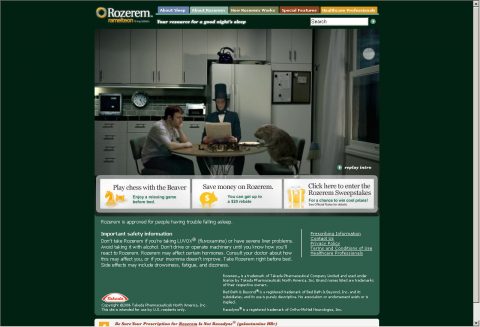
Name of product/campaign: Rozerem
Name of company/client owning product/campaign: Takeda Pharmaceuticals
Year launched: 2006
Type of media: website
Agency producing product/campaign: Abelson Taylor
Team members:
Scott Hansen – Creative Director
Noah Lowenthal – Associate Creative Director
Marissa Ori – Copywriter
Vanessa Donley – Art Director
Ben Murphy – Developer
Cindy Stone – Account Director
Jeanine Koch – Account Supervisor
Goals of product/campaign: Beat Goliath…Ambien dominated the insomnia market like few products ever have. Our goal was to introduce a new way of thinking about sleep, and to introduce Rozerem as a new option for the treatment of insomnia. In order to take down Goliath, Rozerem needed to spend BIG. $200 million in broadcast media spend big.
With millions of eyeballs being driven to the website we had to ensure that we provided a seamless, immersive brand experience with absolutely no tradeoffs.
And we had to invent the technology to do it!
Description of product/campaign: Rozerem.com gives patients and consumers easy access to detailed information about Rozerem and educates them on how sleep works and the topic of insomnia, while including entertaining, yet educational aspects to the website to encourage the user to return to the site and learn more.
What made this a special product/campaign: So…we created a video-based site for the launch of the brand.
The problem was that at the time, streaming video was about as easy as pushing an elephant through a garden hose. ‘Choppy’ and ‘spooling’ were two adjectives that summed up the experience for almost everyone watching video on the web.
In order to combat that, we created technology that broke the video packets into smaller, easier to deliver bits. This allowed us to simultaneously load 49 separate videos on the home page in order to seamlessly introduce the Rozerem “Your Dreams Miss You” campaign to the World Wide Web.
This proprietary technology allowed us to extend the conversation between Abe Lincoln, the Beaver, and Doug the insomniac, in an utterly charming interface that was the first of its kind.
And we struck a nerve. In the first 6 months Rozerem.com received over 2 million visits. Many of whom ended up playing chess with the beaver…
Awards and honors the product/campaign received:
wwwHealth Awards: Silver
World Wide Web Health Awards: Silver
DTC Nationals Most Innovative Campaign: Bronze
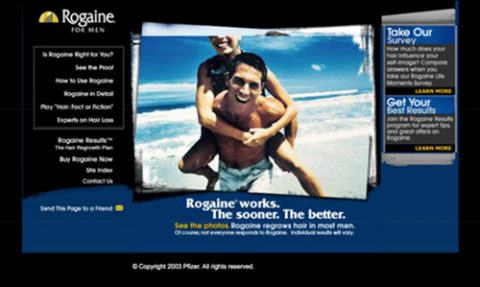
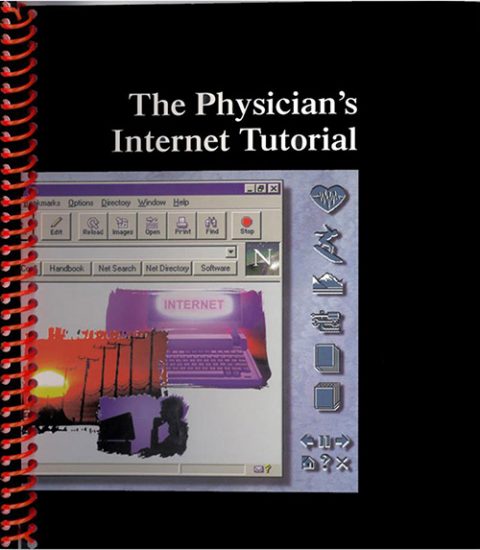
Name of company/client owning product/campaign: Roche Laboratories
Year launched: 1996
Type of media: Print/Live Workshops/CD-ROM/Hybrid Media
Agency producing product/campaign: IntraMed Educational Group
Goals of product/campaign:
What made this a special product/campaign: Developed in 1996 when clients were wary about the value and regulatory environment of the Internet, this program managed to gain huge physician adoption without actually creating a website. Rather, we taught physicians how to use the Internet, and in so doing showed them how to do research on topics of importance to our client. We also created a customized online experience in a way that was valuable to physicians while providing a unique communications channel for our client.
